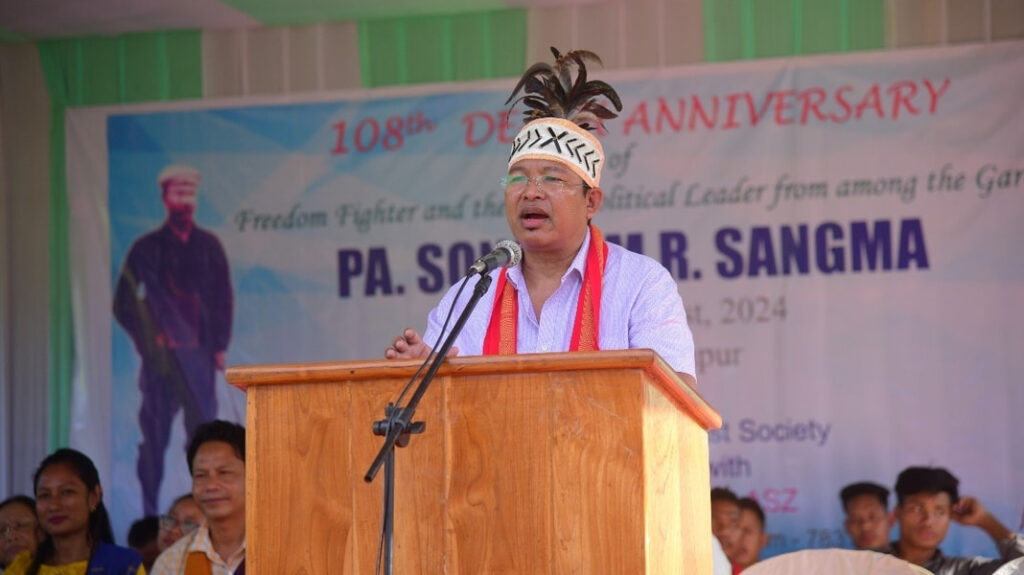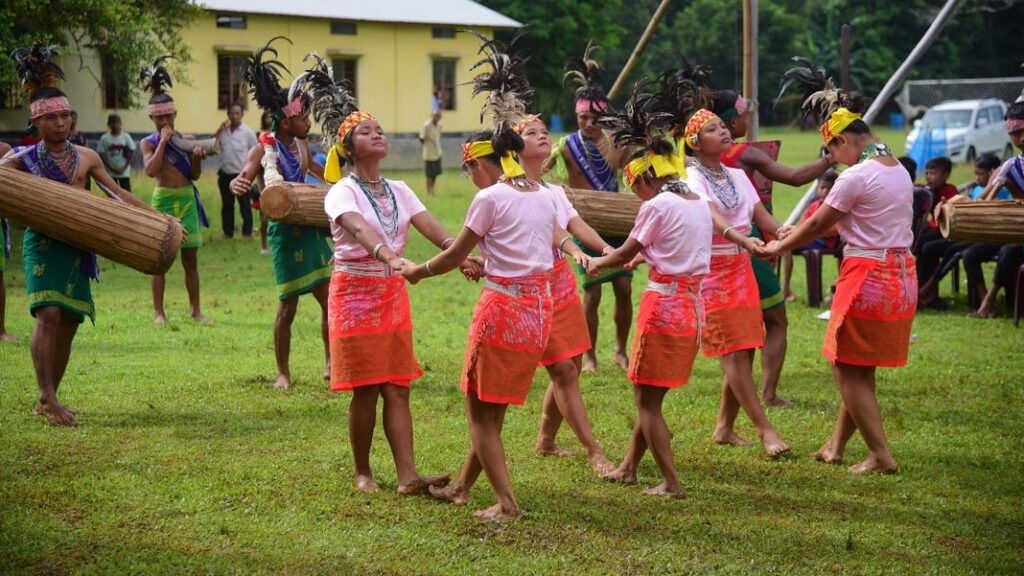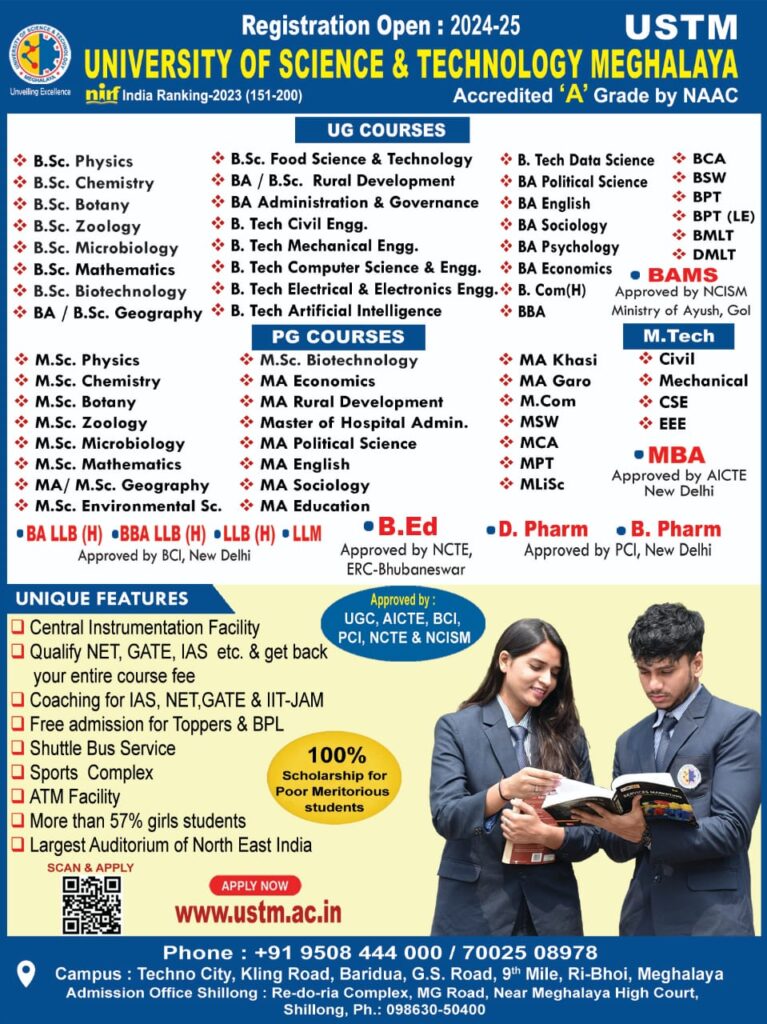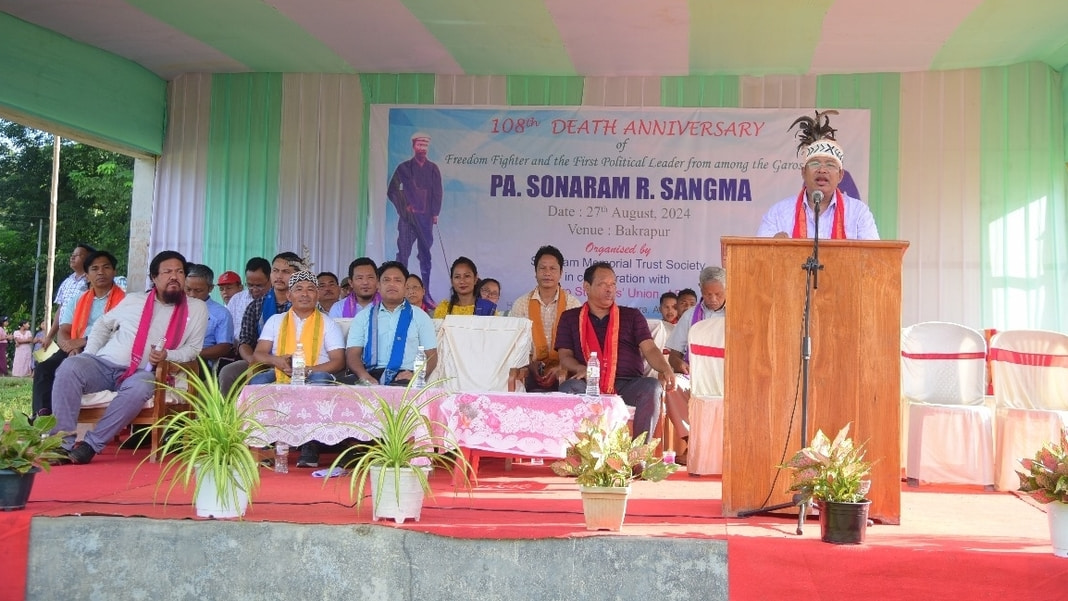Tura, Aug 28: When one thinks of India’s freedom struggle, names like Mahatma Gandhi, Jawaharlal Nehru, and Subhas Chandra Bose immediately come to mind. However, one would be surprised to know that a man from the remote Garo Hills was already fighting the British colonialism with non-violent means much before the famous ‘Satyagraha’ or ‘Ahimsa’ movement of Gandhi.
This is the story of Pa Sonaram R. Sangma, a Garo freedom fighter whose non-violent and legal battle against British colonialism began at a time when the world had yet to hear the name of Mahatma Gandhi, and the philosophy of non-violence was far from becoming a global movement. He is considered the first Garo political leader who united the Garos scattered in the hills of present Garo Hills and the plains to Assam to fight the oppressive British regime.
Pa Sonaram R. Sangma was born in the small hamlet of Na’chirongdik in the Garo Hills around 1867 in the erstwhile undivided Assam. Despite the remote location, he got exposure to education—first at the Nishangram Primary School in Assam, and later at Tura Mission School.

Working as a road Mohurer and Vaccinator for the British India Government, he travelled to remote corners of the Garo Hills, coming face to face with the stark realities of British colonialism. His work brought him close to the grievances of the Garo people—grievances that would eventually spark a non-violent resistance movement that remains largely unrecognized in the annals of Indian history.
Long before Gandhi’s return from South Africa and his subsequent leadership in the Indian independence movement, Sonaram was already laying the groundwork for a similar struggle in the Northeast. By 1899, he had identified several key issues plaguing his people.
These were: (1) The Habraghat Pargana, situated in the southern side of the Goalpara District, was once under the possession of the Garos and a Garo Kingdom flourished there with Habrasen or Abrasen as its reigning king, and that this Pargana had been made as a part of his zamindari; (2) That the Garo people living under the so called Nazarana Mahals were being subjected to the payment of nazir or a kind of tax which they had to pay to the British Government as a sign of suzerainty; (3) That the vast stretches of virgin forest lands under the Garo Hills were being converted into Government Forest lands, thereby depriving the indigenous A’chiks of their customary and traditional practices of Jhum Cultivation; (4) the simple Garo people were being forced as labourers without any payment or remunerations for their services.

Determined to fight these injustices, Sonaram embarked on a legal and non-violent battle against the British in 1899. He went to Calcutta and consulted with counsels at the Calcutta High Court, and submitted numerous petitions and memorandums to various high officials and authorities of the British Government for addressing and redressing the aforementioned grievances.
In December 1902, he gathered 400 Garo volunteers and organized a procession from Damra to Dolguma, protesting the payment of land revenue to the Bijni Raj. It led to his arrest along with several other Garo Nokmas and Pundits; they were thrown into Dhubri jail for some months.
But Sonaram’s resolve did not waver. Even after his release, he continued to challenge British policies through legal means. This was followed by another jail term for him yet his indomitable spirit could not be dampened. On his release from the jail, he continued his activities in spite of harsh restrictions imposed on him.
In 1905, an inquiry Commissioner was sent to the Garo areas to find out the causes of the recurring troubles. J.C. Arbeitnott, the Inquiry Commissioner, submitted his report to the Government of India in 1908.
All these resulted in partial victories as the British India government stopped further conversion of forest areas into Government reserved forest and the labourers engaged for work and to carry bags and baggage of the Government officers on tour duty, were henceforth paid.
However, even after admitting that Garos had suffered a loss of certain territory, the British India government expressed its inability to rectify it. Thus, the first and the foremost demand on Habraghat Pargana could not be fulfilled.
Even after the final verdict was pronounced, Sonaram did not give up and continued his legal fights in the Calcutta High Court and continued submitting prayers and petitions to the various Government authorities. While continuing his fights for the cause of the Garo nation, he fell ill one day at Goalpara and was brought to the house of his niece at Bakrapur. He breathed his last on August 27, 1916, and was consigned to a grave at the Bakrapur Cemetery.
Pa Sonaram R. Sangma’s struggle was a precursor to the larger non-cooperation movements that would later sweep across India, yet his efforts have remained in the shadows.
At the same time, it is pertinent to draw the striking parallels between Pa Sonaram R. Sangma and Mahatma Gandhi. Both chose non-violence as their weapon against the British Raj, both led their people with unwavering determination, and both faced imprisonment for their beliefs. Yet, while Gandhi’s name is known worldwide, Sonaram’s contributions have faded into obscurity – a reflection of the broader neglect of the Northeast’s role in India’s freedom struggle. The contributions of leaders like Sonaram R. Sangma are often relegated to footnotes, overshadowed by the more well-known narratives of the independence movement.
To ensure that his struggles remain in the hearts and minds of his people, and enlightening others, the Garo Students Union (GSU) Assam State Zone (ASZ), in collaboration with the Sonaram R. Sangma Memorial Trust Society, commemorated the 108th death anniversary of this forgotten hero at Bakrapur village playground in Dudhnoi on Tuesday (August 27, 2024).
The program featured a detailed recounting of Sonaram R. Sangma’s life by Desal Bimik R. Marak, who emphasized the leader’s unwavering commitment to the Garo people. “Sonaram R. Sangma was a true A’chik nationalist and patriot,” Desal remarked, “He was the first Garo who conceived and spread the idea of Pan-Garoism, uniting the Garos living in different corners of the Garo areas to fight for justice.”

Albinush R. Marak, Chief Executive Member of the Garo Hills Autonomous District Council (GHADC), Tura, who was the Chief Guest at the event, drew direct comparisons between Sonaram and Mahatma Gandhi. He pointed out that Sonaram’s movement against the British began long before Gandhi’s own struggle took shape. He called for widespread publicity and dissemination about Sonaram R. Sangma, so that the coming generations will know about his movement against the British.
Despite the efforts to commemorate Sonaram’s legacy, there is a lingering sense of injustice regarding how his contributions have been overlooked. Tengsak G Momin, President of GSU Central Executive Committee, Tura, appealed to the governments of Assam and Meghalaya to publish about Sonaram’s actions like non-cooperation movements against the British which was the way before Mahatma Gandhi and other freedom fighters’ movements against the British Raj.
During the event, Frylin R. Marak, Executive Member of the Rabha Hasong Autonomous Council (RHAC), announced plans to erect a statue of Sonaram R. Sangma, ensuring that future generations remember his contributions. However, he also highlighted the challenges faced in this endeavor, noting that the Sonaram R. Sangma Memorial Trust Society has yet to secure land for the statue’s installation.
The legacy of Pa Sonaram R. Sangma is not just a footnote in history; it is a testament to the courage and resilience of Northeast India, and a reminder that the struggle for freedom was fought in every corner of this vast nation. As the Garo community gathers each year to remember Sonaram, there is a growing need to ensure that figures like Sonaram R. Sangma are given their rightful place in history—not just as regional icons, but as national leaders whose contributions were vital to the fabric of India’s independence.
Read: BSF’s Inter-Command Women’s Sports Competition 2024 begins in Shillong with 120 participants
WATCH:
Find latest news from every corner of Northeast India at hubnetwork.in, your online source for breaking news, video coverage.
Also, Follow us on-
Twitter-twitter.com/nemediahub
Youtube channel- www.youtube.com/@NortheastMediaHub2020
Instagram- www.instagram.com/ne_media_hub
Download our app from playstore – Northeast Media Hub





